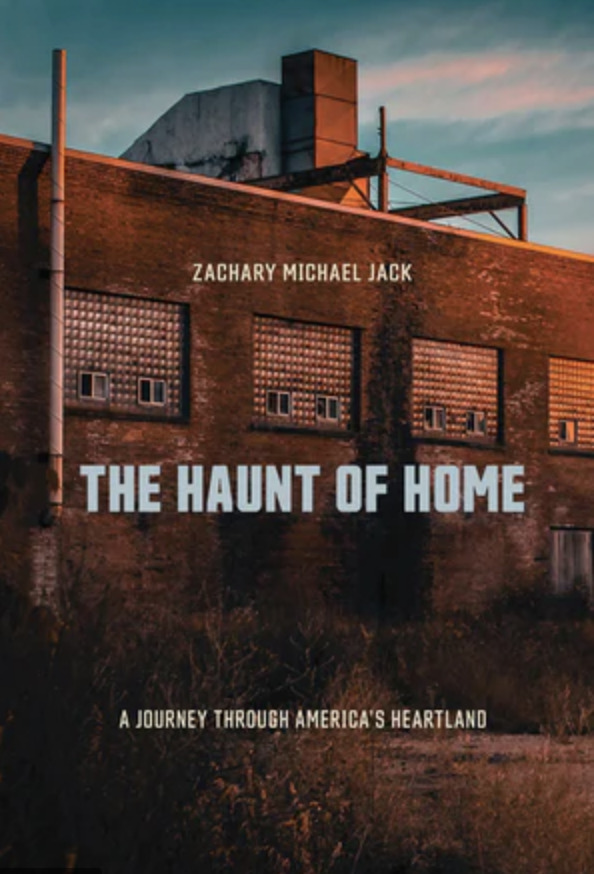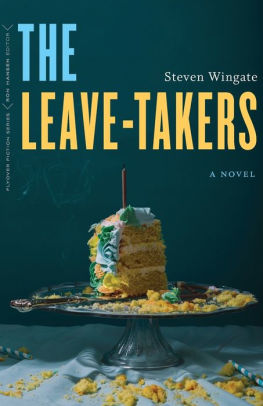Reeds Spring, MO. In her 2016 essay “Dispatch from Flyover Country,” Meghan O’Gieblyn defines the Midwest by its transience:
We were never far from a freeway, and at night the whistle of trains passing through was as much a part of the soundscape as the wind or the rain. It is like this anywhere you go in the Midwest. It is the sound of transit, of things passing through. . . . On some nights, it’s easy to imagine that it is the sound of a more profound shifting, as though the entire landscape of this region—the North Woods, the tallgrass prairies, the sand dunes, and the glacial moraines—is itself fluid and impermanent.
The fluidity O’Gieblyn documents here has long characterized the Midwest—consider the debates over which, precisely, states and geographic areas ought to be considered part of the region. (For the record, the correct answer is: Ohio, Indiana, Illinois, Iowa, Michigan, Wisconsin, Minnesota, Missouri north of the Ozarks, and all parts of Kansas, Nebraska, and the Dakotas east of the 100th meridian. There.*) No other American region is so unstable in its essence or, increasingly, so contested in its meaning. From the crumbling infrastructure of the Rust Belt to the disappearing boomtowns of the plains, the Midwest has never been just one thing; perhaps it never will.
While the Midwest has received new attention in national discourse since its pivotal role in the 2016 presidential election, this scrutiny, energized by partisan concerns, has done the region itself little good. Political pontification about the Midwest has always tended toward a simplistic essentialism, whether that means characterizing small towns as a pastoral “real America” or redrawing the region as a territory of prejudiced God-and-guns rage.
We cannot rely exclusively on national voices, then, for a constructive account of the Midwest, a story that will help us define the region anew for our moment. Rather, we must look to the varied voices of Midwesterners themselves. Two recent books, contributing to that definitional project, tackle the most challenging features of Midwestern life while imagining paths toward a new optimism for the region. These works of what might be termed (adopting a term used by a notable regional journal) Midwestern Gothic address the darkness and the transience of Midwestern life, while providing paths to a new and hopeful vision of the region.
Zachary Michael Jack’s essay collection The Haunt of Home: A Journey Through America’s Heartland examines the sense of fatalism that “positively infuses the nation’s midlands, creeping into its folkways and social mores.” For Jack, the understated pessimism of the Midwest, for all its gloom, can have salutary effects for the community life and potential future of the region. The collection proceeds in three sections: “Legacies,” looking at the end of Jack’s father’s life; “Visitations,” which recounts trips to sites reminiscent of the Gothic across the Midwest; and “Resurrections,” which ties the personal and the regional together with a look to the future of the Midwestern Gothic sensibility. The book presents a compelling sweep of obscure Midwestern landscapes and people, including a visit to the Field of Dreams in Dyersville, Iowa; a trip to play “pasture golf” on forgotten small-town courses in central Nebraska; and interviews with the son of a casket-maker and a woman who runs a pie-making business out of the house Grant Wood painted in “American Gothic.”
While Jack’s focus remains on the haunted, on things that are passing away, the book does not endorse a simplistic portrait of rural decline but rather finds compelling stories and signs of growth on the back roads of Jack’s home region. Indeed, in “The Promise of New Blood,” he presents new economic development research from the University of Minnesota that suggests that people who move away from the Midwest in their 20s often return in their 30s and 40s, bringing back new resources and population. While the story of Midwestern small towns has conventionally been told as one of inevitable decline—the “Brain Drain” that sees the young escape for better opportunities in the city—Jack suggests that there may still be life in these rural areas yet. American transience may be healthy for small towns: “New blood, rather than exclusively young blood, keeps a community’s heart pumping, ensuring vigorous circulation and exchange. As in a body, stagnation in a community often gives way to disease.” Rather than understanding these population shifts as small towns bleeding out or dying, they might be better understood as healthy circulation—the pumping of blood around a system that gives life to all.
Jack’s most compelling account of Midwestern transience comes in his most personal essays, recounting the events leading up to his father Michael’s death. Diagnosed with terminal cancer at age sixty, Michael abandons his Iowa farm, bringing an end to his family’s seven-generation tenure on the site, and sets off in a camper for the Florida coast. Telling no one but his children, Michael abandons treatment, giving little explanation for his actions, and flings “himself into oblivion without route or plan in an ill-fated attempt to achieve escape velocity.”
It’s an inexplicable decision, and one that might understandably have prompted the younger Jack to recrimination. Yet despite allusions to a drinking problem that precipitated Michael’s journey, Jack’s portrait of his father’s recourse to flight is gentle, inquiring, sympathetic. He quotes extensively from the emails his father sent him on the journey, messages that depict Michael as funny, affectionate, and a good writer, traveling with “god as my fickle copilot” and signing himself “Wolf.” Jack, who himself has chosen to stay in his native Iowa, ponders whether it is “possible to be born out of place, a displaced soul. Maybe in fleeing the farm for Florida, my father is returning to the home that might have been.” Regardless, it is certain that as Jack wishes his father goodbye on his last departure, Michael “is light again, and I am light again with him, for a single sunrise.” The father’s path is not that of the son, and yet rather than rail against Michael’s consumerism and instability, Jack reflects on his father’s life and seeks to understand it.
That understanding comes as he ponders Michael’s own words. On his arrival at the Gulf Coast, he professes himself inspired, not by the exoticism of Florida, but by how its “endless horizon reminds me of home.” Noting that the limitless Midwestern prairies have often inspired comparisons to the ocean—as well as a similar restless travel—Jack reflects:
As a child my father’s uninsulated bedroom . . . looked south and east onto an endless sea of cornfields, rising and falling gently in the gentle swells and ebbs that defined the landscape of his memory, and that prefigured the pattern of his future migrations.
Ashes to ashes, dust to dust, crest to trough, we imprint on our native landscapes as we do on mother, father, or lover. Wittingly or not, we spend the rest of our lives looking, most of us do, realizing too late that the thing for which we have been searching is the same heart song, the same gut string, we knew in the beginning.
For Jack the sound of transit that defines the Midwestern Gothic is the thrum of the human heart itself. Whether we are, to use Wallace Stegner’s taxonomy, ever-restless boomers or committed stickers, we will reckon with this restless heartsong, this lamentation. Sounding the depths of the Midwestern Gothic thus becomes for Jack a means of insight into the deepest longings of the human heart.
The very title of Steven Wingate’s new Midwestern Gothic novel, The Leave-Takers, proclaims its similar concern with grief and transience. The novel, published in Ron Hansen’s Flyover Fiction series, concerns two bereaved and brittle artists, Jacob Nassedrine and Laynie Jackman, who find themselves improbably attempting to make a life together and begin a family on a South Dakota farm while fighting off guilt, grief, trauma, and addiction.
Jacob is the more fragile of the pair; marked by the loss of his parents in a murder-suicide at age fourteen, he is now mourning the death of his one remaining family member, his younger brother Daniel, to a drug overdose a year earlier. Daniel keeps showing up, though, as a listless and sardonic ghost, angering Jacob and leaving him to cope through an online forum he founded for survivors of murder-suicide and little foil balls of prescription medication he hides around his house.
Laynie is also alone in the world, having also lost her mother at fourteen, endured the death of a fiancé before meeting Jacob, and now confronting the recent death of her father. She is more functional than Jacob—she merely grieves by taking an extended road trip where she disburdens herself of her all her father’s possessions by leaving them one by one in motel rooms and gas stations. She discards her father’s things as an act simultaneously of mourning and of exorcism, believing that those who cling to the possessions of the dead are doomed to visitation—a contention Jacob, haunted by his brother, can’t dispute. Accordingly, Laynie makes herself “a ferrywoman between two realms, as important to the fabric of the world as that old Greek Chiron,” transporting “the leavings of the freshly dead into the hands of those who would love them next. She was a master trader in the seeds of the unknown.” If this is a more constructive way of addressing her grief, Laynie is still not without problems—she has a low-level addiction to pills herself, and a uterine condition that leaves her with only a 3 percent chance of conceiving a child. Aware of those chances, Laynie fixedly pursues conception with Jacob and endures miscarriage after miscarriage.
The novel begins four years after Jacob and Laynie’s initial meeting, at a studio in Los Angeles. Jacob, a metalworker, had sculpted the head of a woman that bears uncanny resemblance to Laynie before the two had ever met, and although both profess skepticism that there is meaning in “God / fate / the universe,” this sense of destiny rapidly draws them together. They come to the edge of marriage—going so far as to secure a license—but their mutual trauma finally blows them apart, and Jacob retreats to family property, Cocklebur Farm (named for its sole, inedible crop) on the outskirts of Clark, South Dakota. After the death of her father, Laynie finds her way to Clark on her Chironesque journey of grief, and she and Jacob settle down together to try being married, having a baby, and exorcising all the things that haunt them.
It’s not easy. Laynie keeps miscarrying, Jacob keeps getting into fights online, and Daniel’s ghost keeps showing up. Moreover, Clark is a grim place for a pair of artists to live. Artsy Jacob never got comfortable in Clark’s rural high school, and those social pressures still hang over him in his hometown. Even the friends he has made testify to the restlessness of the place—older couples who cope with prairie isolation and a sense of being stuck in Clark through drinking and dreams of travel to exotic locales. But Clark is the only place Jacob and Laynie have to face down “their deepest addiction: making the dead live again. The pills were an echo of that, a derivative of that. Once they buried the dead, the pills would follow.” They must take their leave of the dead, achieving a healthy closure on their grief, without in the process becoming leave-takers even while living in Clark, partakers in the embittered restlessness of their friends.
For Jacob and Laynie, to grapple with the transience of life is to grapple with the problem of meaning and meaninglessness. This challenge “might even come, they theorized, from the root of life itself—though they doubted aloud whether God / fate / the universe would have created something without meaning. But the potential to be meaningless resided in all things, exactly like the potential for absolute unity.” In everything they do—grieving and raging, making babies and miscarrying, settling into Clark and fleeing it—Jacob and Laynie strive to grasp the meaning of their lives, in a continual push and pull with the meaning of their place in the Midwest. They have “finite time to do an infinite job on Earth,” and so to fight off the possibility of meaninglessness is critical in every gesture they make.
I’ll not spoil for you how Jacob and Laynie manage that infinite job, except to say that Wingate draws their story to a close with beauty and agony entwined. The Leave-Takers shows us, though, that while we may mourn how “the sound of transit” dominates the Midwest and its literature, this is merely to say that the region affords us profound literary possibilities for meditation on the challenges of making meaning in this fleeting life.
Those of us committed to the Midwest and its literature can and should mourn the damages done to our region by our habits of transience. But we must also recognize, as these two books help us do, that it is not just the Midwest, but life itself, that is “fluid and impermanent.” The potential of meaninglessness haunts us all, and perhaps the task of Midwestern Gothic literature is to call us to attend to this truth, to wake us to the possibility of making meaning here despite the haunted quality of our homes.
* In the original version of this essay, Iowa was left off this list. As a Nebraskan, Matt Miller tries to avoid acknowledging that Iowa exists, but in the spirit of generosity and ecumenism, he has agreed to include it.














Why was Iowa left out of your Midwestern state list? Particularly ironic since one of the books you feature is by an Iowan and focuses much on Iowa.
Looking out across an Iowa cornfield and was wondering the same thing — sure it is an oversight — we all make them.
Lovely writing. The review was a real pleasure to read.
Thomas and Will: thanks for reading. Please see the appended correction.
Comments are closed.